Now that we are heading into the warmer months, your mind may be turning to garden rooms and conservatories.
Whether you are considering building a new conservatory or searching for ideas on how to make the most out of your existing space, we’re here to help.
At Manchester Window Factory, our expert team has over 25 years of experience in the selling and installing of conservatories, windows, and doors.
In this blog, we’ll give you the low-down on the different types of conservatories and hopefully provide some ideas and inspiration to make your conservatory work for you.
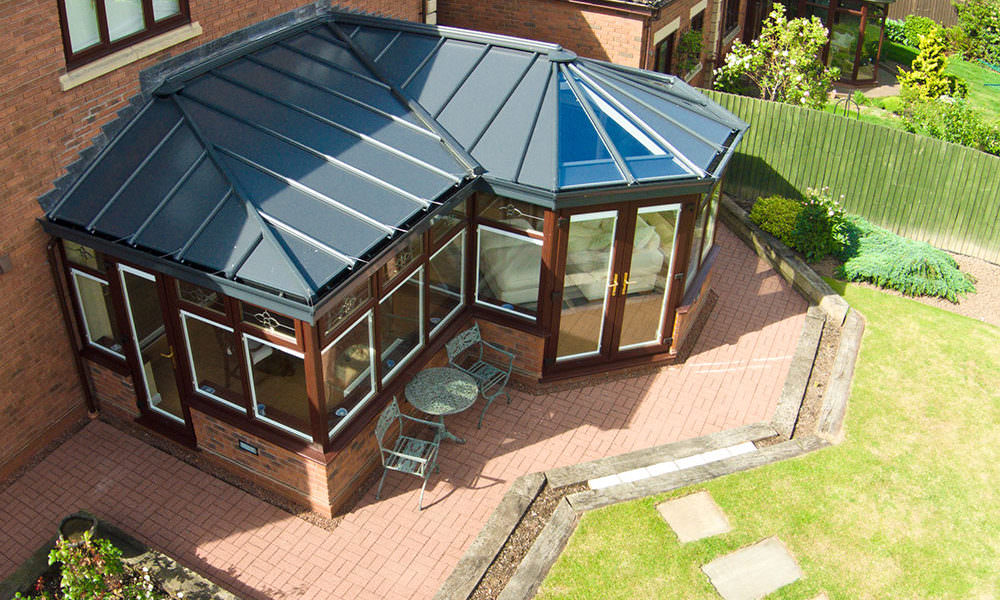
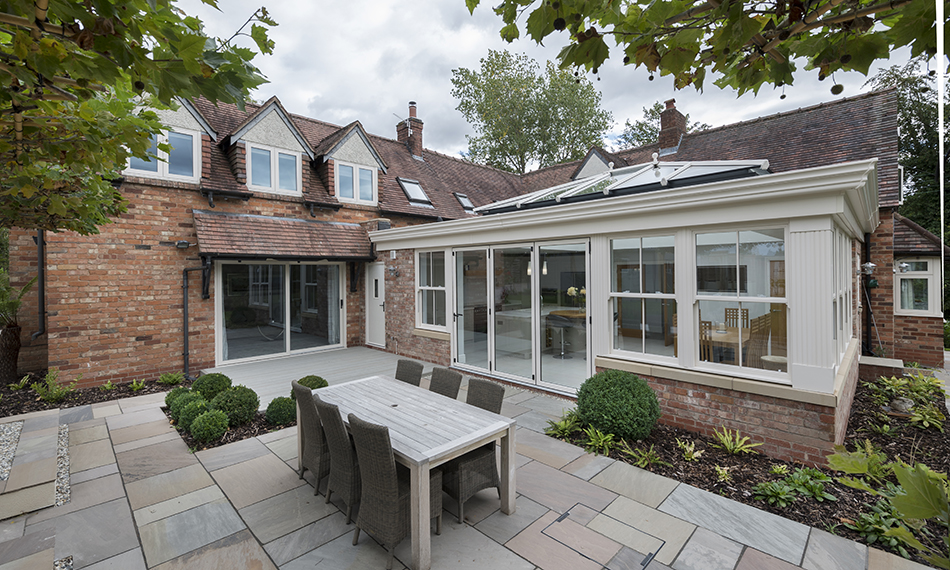
Benefits of building a conservatory
There are many benefits to having a conservatory attached or close to your home, including:
- An extra living space to be used all year round
- Cheaper than an extension
- Much cheaper than moving home
- Lots of styles to suit your taste
- Fantastic views
- Let the natural light flow
- Can create a seamless transition from the outside in
- Usually don’t require planning permission
- An attractive addition to your property
- Can increase the value of your home
There aren’t really ‘cons’ per se of installing a conservatory, but there are a few things you should think about before you go ahead.
What to consider when choosing a conservatory?
Planning permission
In most cases, installing a conservatory or upgrading your existing one will fall under permitted development rights and will therefore not require planning permission.
There are a few exceptions to this rule:
- If you live in a listed building
- If you live in a conservation area
- Orangeries and garden rooms may require planning permission
Permitted development rights
Most conservatories are covered by permitted development rights, which allow homeowners to extend up to 4m in height and 4m on a rear extension. If you are planning a side extension, it must be less than half the width of the main property, if it is attached to an original wall in the house.
Building Regulations
Most conservatories are considered to be an extension so the usual rules apply. Your conservatory should be:
- Built at ground level
- Less than 30 square metres in floor area
- Have an independent heating system
- Be separated from the house by external walls, doors or windows
Letting your neighbours know
You also need to check whether your conservatory plans are covered by The Party Wall Act 1996. Even if you’re legally converted from involving your neighbours, it is only good manners to inform them of any impending building work. After all, wouldn’t you want them to do likewise if the situation were reversed?
Budget
Your budget will determine the size of the conservatory and the basic style/layout you can afford. Costs can also vary wildly between the materials used.
If money is tight, you could consider just replacing elements of your existing structure, such as your conservatory roof, for better energy efficiency and insulation.
Security
A largely glass structure can be vulnerable to prying eyes and can be could be seen as an easy entry point for potential thieves. However, all our conservatories include windows and doors with secure locking systems.
Once you’ve crunched the numbers, it’s time for the fun bit – deciding what style of conservatory you want.
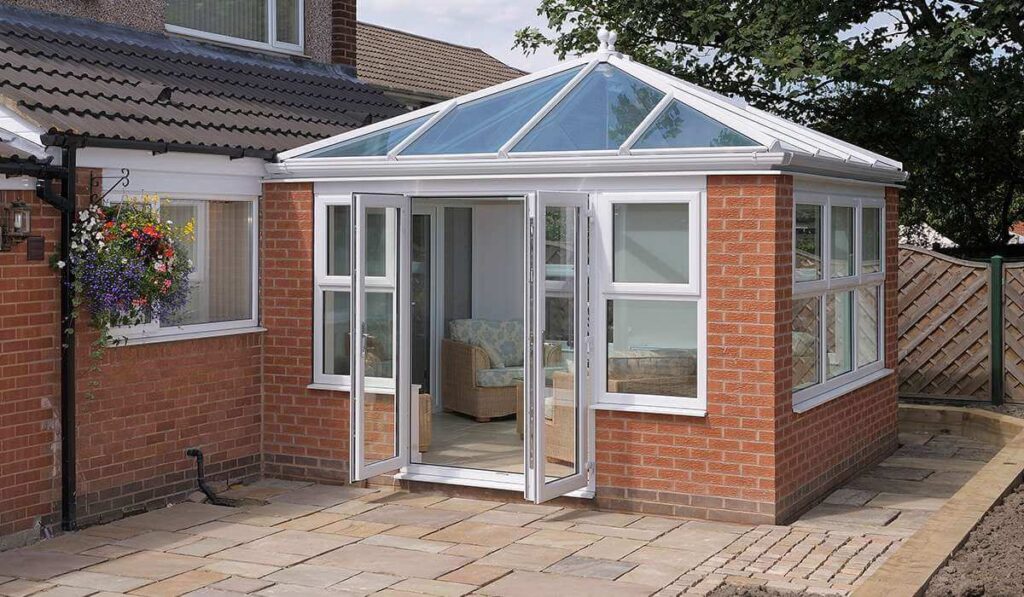
What is the best layout for a conservatory?
Which is the best layout depends on several factors, including:
- The location of the conservatory to your property
- Your budget
- The purpose/function of your conservatory
- The look you are hoping to achieve
Conservatory Design Ideas
You’ll find classic and modern conservatory design ideas in magazines, showrooms, and social media. But first, you need to choose a layout.
The style of conservatory you choose will be influenced by your existing architecture and decor. But your chief concern should be the room’s function.
How and when you intend to use your conservatory will inform your design choices.
Conservatory Styles

Lean-to
One of the simplest and most cost-effective conservatories is the lean-to. This is usually a square or rectangular build that utilises an external wall of your property where the roof angles down to the front of your new conservatory.
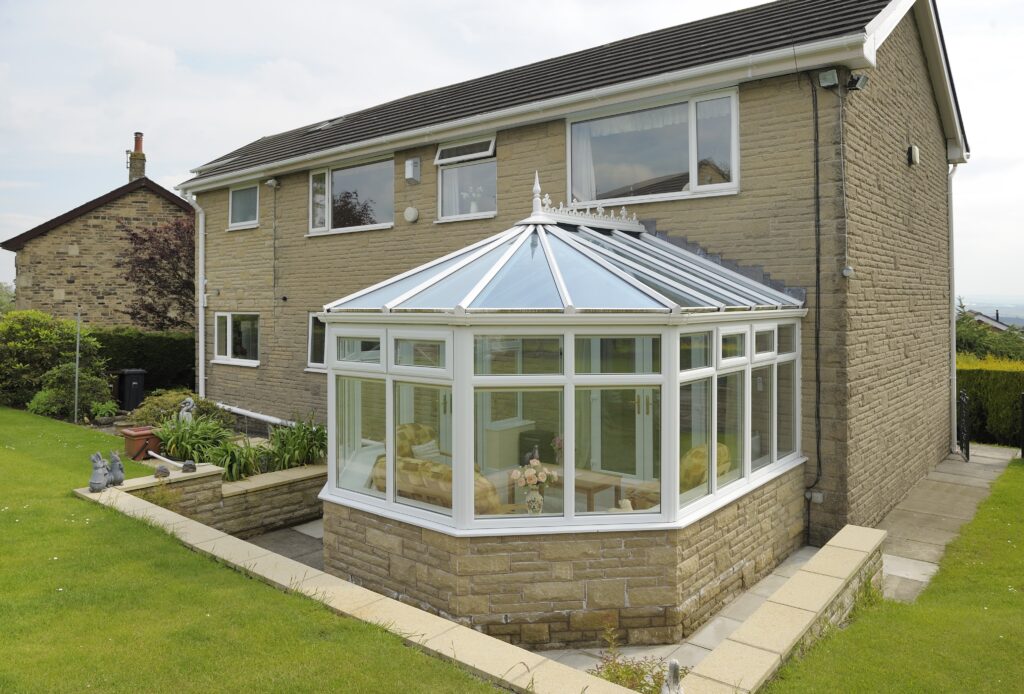
Victorian
Those who prefer a more ornate decorative finish may prefer a Victorian-style conservatory, with a pitched roof.

Edwardian
A simplified version of the Victorian-style, Edwardian conservatories also feature pitched roofs but with flat walls. The simplicity and maximising of floor space make Edwardian conservatories a popular choice. They are also not limited in size by the projection of the house.
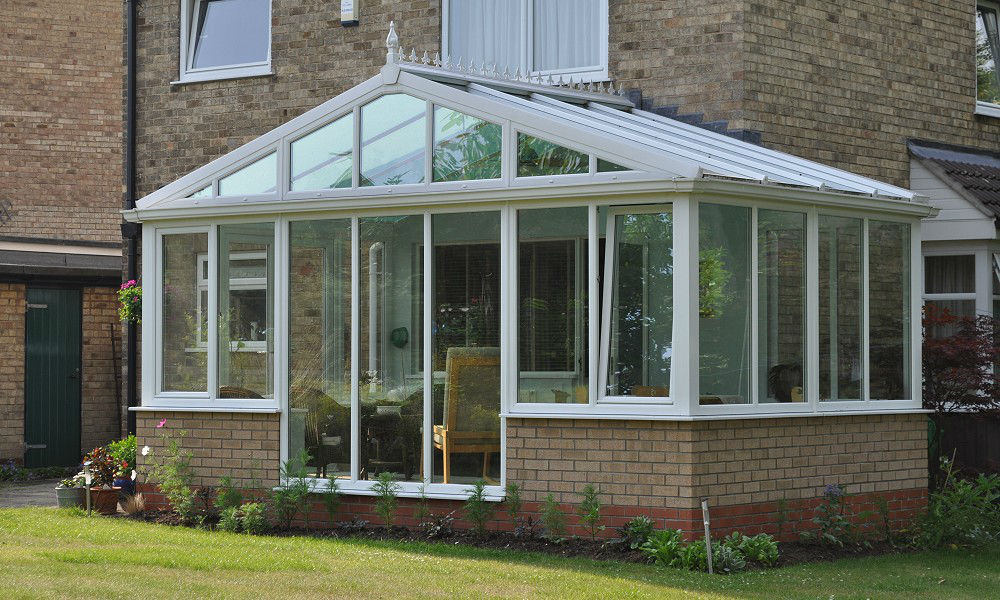
Gable
Staying with the classic looks, the Gable conservatory has an upright roof that looks like the gable end of a building. This structure gives you additional roof height at the front and maximises floor space by not sloping backwards.

P-shape
Bringing together the lean-to and the Victorian or Edwardian styles, the P-shape conservatory is one of the best options for creating a large space with multiple uses.

Small Conservatories
If space is at a premium, you may be looking for small conservatory design ideas. A small conservatory will still add living space and may serve as an extension to a family room or a kitchen. The key to maximising the space is to keep clutter to a minimum, decorate in neutrals (although strategic pops of colour are also encouraged) and look for furniture which doesn’t take up to much room. Window benches and banquette seating are ideal for this purpose and can also be used as storage. You could also go for foldable seating or bean bags, which can be easily moved. Adding plants also help open the room to a transition area between the outside and the other rooms in the house.
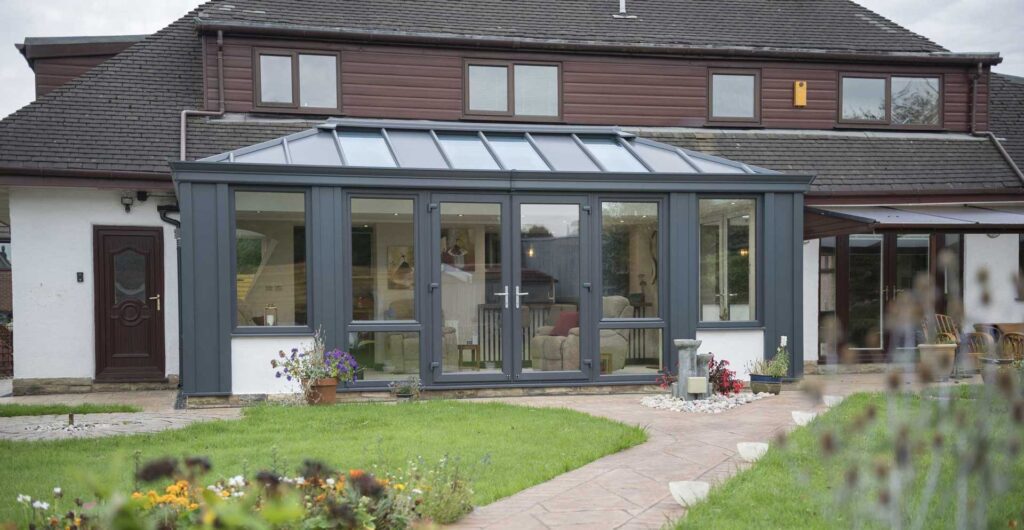
Orangery
An orangery is similar to a conservatory but tends to contain a lot less glass. Orangeries tend to favour brickwork, though with large windows and a flat roof with a roof light. Orangeries can also have timber frames.
If none feels quite right, don’t worry, we will work with you to design a bespoke conservatory you will love
Are modern conservatories too hot?
In years gone by, conservatories were often too cold in the winter and too hot in the summer. The abundance of glass caused uncomfortable temperatures for much of the year, leaving conservatories unused.
It’s possible that extreme temperatures could still cause your conservatory to become too hot, particularly if it is south-facing.
If that happens, you can use temporary measures, such as an air conditioning unit or blinds to bring the temperature back down to a comfortable temperature.
However, thanks to modern technology, it is much less likely that your conservatory will overheat.
Inventions such as integrated blinds, self-cleaning glass and Planitherm glazing options have increased the usability of conservatories. These days, the glass doesn’t have to get dirty and require a good cleaning before it can be used in the summer. Internal blinds and Planitherm glass also enable homeowners to better control the temperature, so conservatories can be comfortably used, even in the winter.
What type of flooring is best for conservatories?
There are a couple of options for flooring in your conservatory. The three most popular choices as:
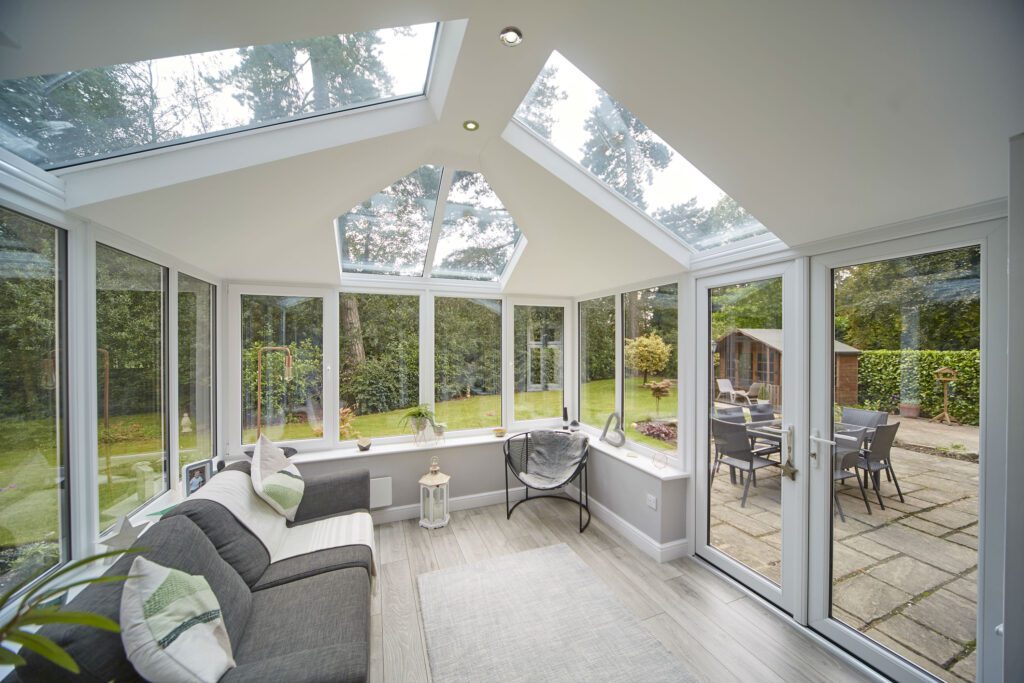
Carpet
Carpets are warm and cosy and help with insulation, making them a popular choice for conservatory flooring. A neutral shade will keep the conservatory looking light and fresh. However, if you have small children or four-legged friends, you might want to consider a darker colour or an alternative type of flooring.
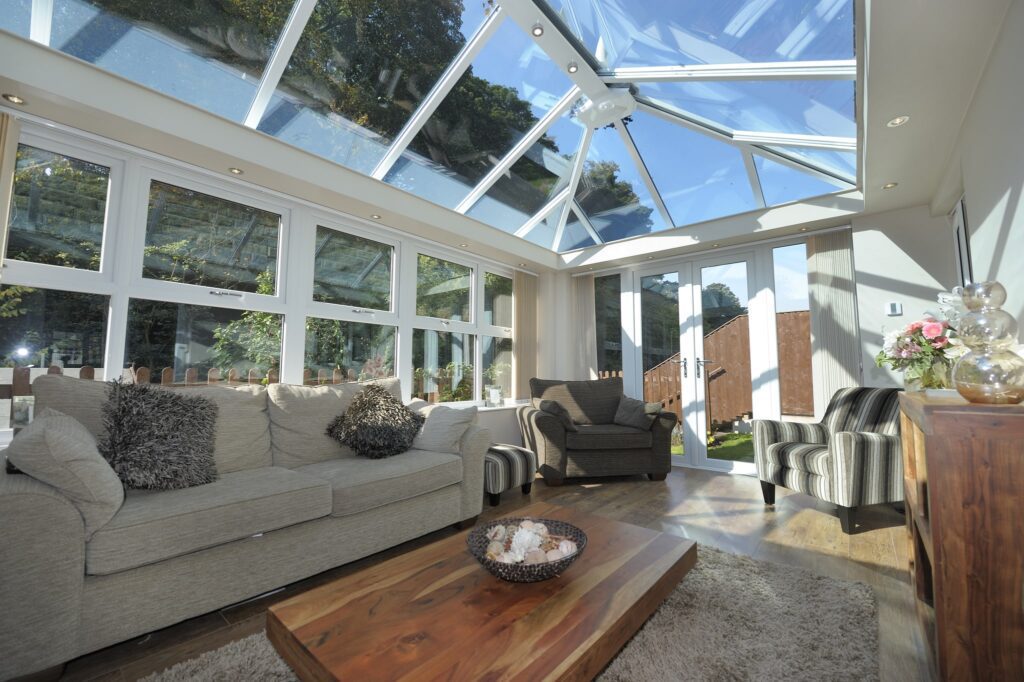
Laminate flooring
Another option is laminate flooring. Giving you the same wide range of colours and styles you find in carpets, laminate flooring is easier to clean and maintain. Cost-effective and attractive, it is also a much more practical option for conservatories that lead into a garden.
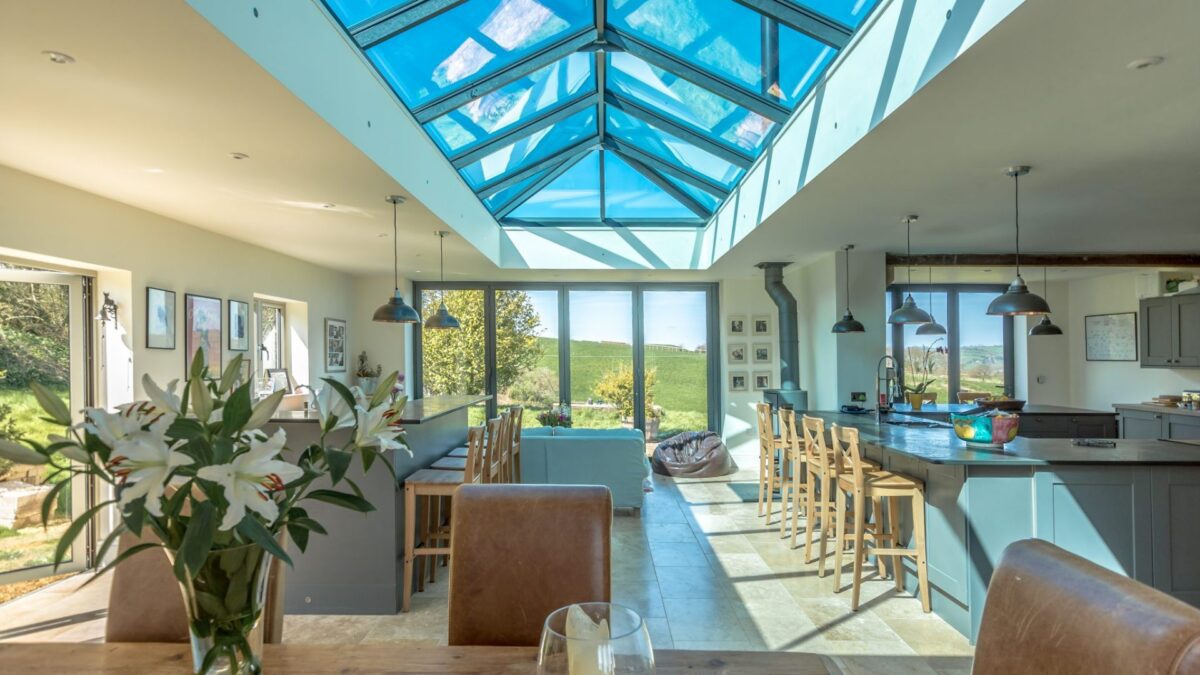
Engineered Wooden Flooring
Solid wood flooring isn’t particularly suited to a conservatory. Despite improvements in temperature control, it is unwise to have a solid wood floor in a room which can get very hot and rapidly cool down, as the wood will expand and contract. Engineered wood flooring provides the look of a solid hardwood floor but is resistant to changes in temperature and humidity. It is also far more durable. Created by layering different woods and topping them with a hardwood veneer, engineered wood flooring can last up to 30 years.
Another advantage of engineered wood flooring is that it is easy to install and typically uses a tongue and groove system. Most types of engineered wood flooring are also suitable for use with underfloor heating.
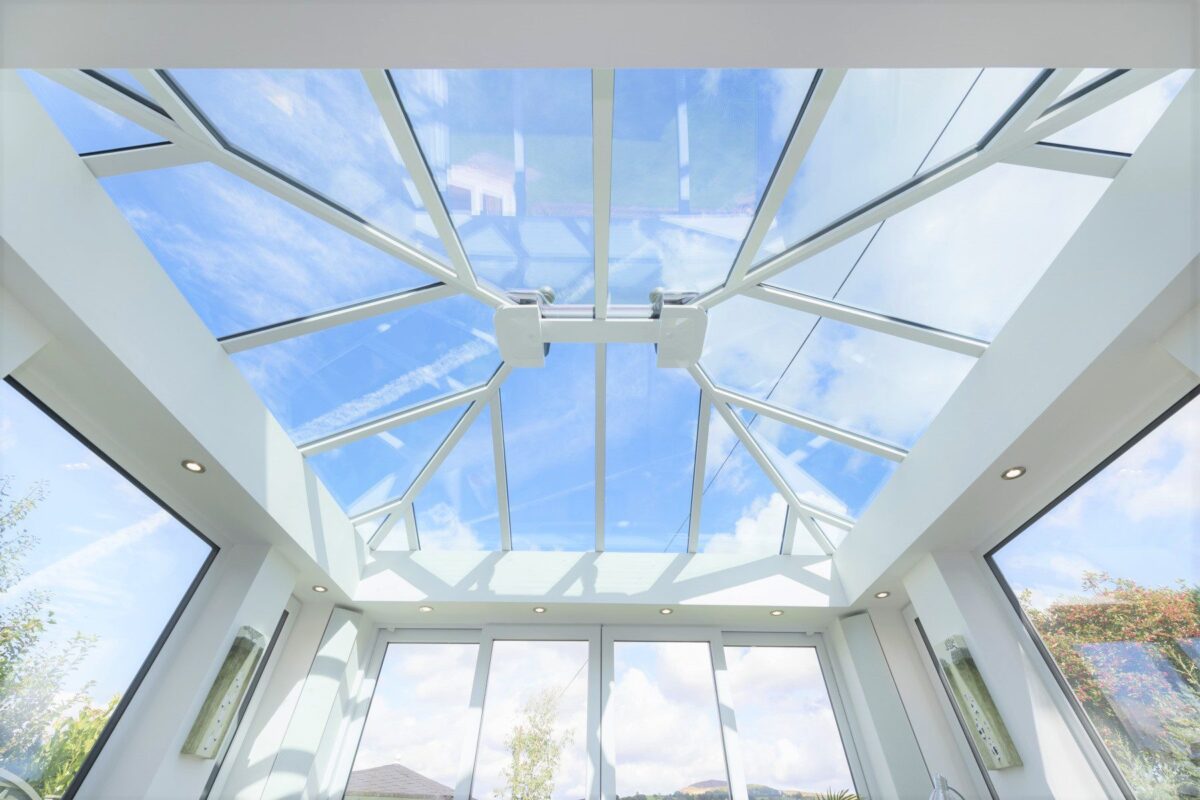
Finishing Touches
The interior decor will have almost as much impact on the look of the conservatory as its layout and structural style. Remember to leave room in the budget for those little added extras that provide comfort and allow you to put your fingerprint on the space.
We hope this blog has helped you decide which type of conservatory is best for you or at least given you some conservatory design ideas.
Remember, one size doesn’t fit all, so weigh your needs against your budget.
Manchester Window Factory offers bespoke conservatories, so you can design what you want. Our professional fitters can also install it for you so you can enjoy your new space within a matter of days.
How to Get in Touch
If you want to find out more about creating customised windows, doors, and conservatories, please don’t hesitate to get in touch. You can call us on 0161 976 4739, use our contact form or chat with us via the chat button at the bottom right of this website. If you live locally, you can also visit our Altrincham showroom, and check our contacts page for up-to-date opening hours.
We look forward to hearing from you!




